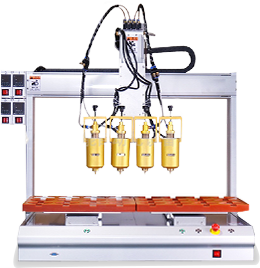

Metal electronic equipment chassis stamping parts are based on high-quality metal plates such as cold-rolled steel plates and aluminum alloys, and are reshaped by precision sheet metal stamping technology. Relying on the precise control of CNC punching machines and the unique design of customized molds, the chassis shell and internal brackets are punched, bent and integrated into one, and exquisite structures such as heat dissipation holes, mounting positions, and interface reserved slots are simultaneously carved out. After rust-proof treatment, it is given a metallic appearance, building a physical protection barrier and orderly installation space for the motherboard, power supply, interface module, etc. of electronic equipment. It is widely applicable to industrial computers, servers, communication equipment, etc., and builds a "steel armor" for the stable operation of equipment.
Features | Details |
Stable protection | The metal sheet is strengthened by the stamping process to form a high-strength structure with excellent deformation and impact resistance. It can effectively resist external physical interference and create a safe and stable operating environment for internal electronic components. |
Precise adaptation | With the support of CNC stamping technology, the dimensional tolerance is strictly controlled within ±0.1mm, and the installation position, interface slot and electronic components are precisely matched, which greatly simplifies the equipment assembly process and improves production efficiency. |
Efficient heat dissipation | The stamped honeycomb, long strip and other heat dissipation holes and ventilation slots build efficient heat dissipation channels, accelerate the discharge of internal heat, reduce the risk of overheating of electronic components, and ensure the long-term stable operation of the equipment. |
Flexible customization | The chassis size and structure can be adjusted as needed, and the surface treatment can be optional electrostatic spraying (multiple colors are available, mainly gray), anodizing and other processes, accurately adapting to the functions and appearance requirements of different electronic equipment. |
This metal electronic equipment chassis stamping part focuses on the research and development of electronic equipment integration needs. The base material is selected from 1.0-2.0mm thick cold-rolled steel plates (aluminum alloy materials can be selected when pursuing lightweight), balancing strength and processing convenience. The production process follows strict standards: laser cutting achieves accurate cutting of plates, laying the foundation for subsequent processing; CNC punching machines cooperate with customized molds to punch out the chassis body at one time, and simultaneously form honeycomb or long strip heat dissipation holes, multi-functional mounting brackets and interface reserved slots; the bending process carefully shapes the three-dimensional chassis structure to ensure both airtightness and support; the deburring process meticulously eliminates sharp edges and improves operational safety; in the surface treatment stage, the electrostatic spraying process gives the chassis rich colors (mainly gray, suitable for industrial scenes), or uses anodizing technology to enhance wear resistance and rust resistance, and retain the original texture of the metal.
The internal design of the chassis fits the modular trend of electronic equipment. The installation position is compatible with standard circuit boards and power modules. The wiring grooves reserved on the sides and bottom help to arrange the cables in a regular manner to avoid entanglement and interference. It is widely used in industrial control servers, communication base station equipment, industrial control terminals and other scenarios, creating an integrated solution of "protection + installation + heat dissipation" for electronic components. With the advantages of precise adaptation brought by high-precision stamping, reliable protection given by stable structure, and flexible customization to meet diverse needs, it helps electronic equipment achieve efficient integration and long-term stable operation, and becomes a solid hardware support for electronic equipment in the fields of industry, communication, etc.
 Headquarters tel.
Headquarters tel. E-mail.
E-mail.